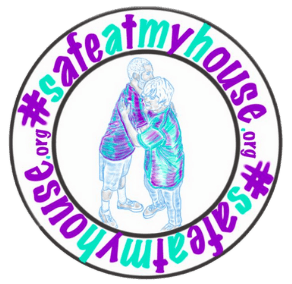Bullying has become a big problem in schools all over the world. It can have a negative impact on a child’s education and social life. In this blog post, we’re going to take a look at bullying and its effects on children. We’ll also provide some tips on what you can do if your child is being bullied.
Recognizing the Signs of a Bully
Bullying can have a negative impact on a child’s education and overall development. It is important to be aware of the different types of bullying, as well as the signs that your child may be a victim. Here are some tips on how to identify the signs of bullying:
– Your child may show signs of anxiety or depression. These symptoms may include feelings of isolation, sadness, and withdrawal
.- Your child may also exhibit aggressive behavior towards other children or adults. This could take the form of name-calling, threats, or physical aggression.
– If your child frequently misses school because they are too afraid to go to class, this could be indicative of bullying.
If you notice any of these indicators in your child, it is important to speak with their teacher or doctor about what you think might be happening. Together, you can work together to try and prevent bullying from occurring in your kid’s school district! However, if the bullying becomes too severe or persistent, you may need to take additional action.
The first step would be to talk to the child’s parents about what is happening. If parents are not willing to address the issue head-on, then law enforcement may have to get involved. In extreme cases where a child is being physically abused or is experiencing constant harassment that prevents them from going to school, they may need professional help.
The Different Types of Bullying
There are four main types of bullying: physical, verbal, relational, and cyberbullying. Each type of bullying has different effects on the victim. Physical bullying is the most easily detectable form of bullying. It involves making physical threats or engaging in physical violence. Physical bullies often have a strong physique and are usually taller than their victims. They may use their size to intimidate their victims or to gain power over them. Verbal bullying can be just as harmful as physical bullying. They may use abusive language to hurt or embarrass the victim. Relational or social bullying typically works behind the scenes to isolate the victim from his friends and family. They may spread rumors about the victim, insult the victim’s relationships, or put him down in front of others. Cyberbullying is a relatively new phenomenon that takes place online or through electronic devices such as social media platforms. Cyberbullies target their victims for cruelty and humiliation because they know that no one will see it happening except for their intended targets.
Why Do Kids Bully?
Bullying is a problem that affects both children and adults alike. There are many reasons why kids bully, but the most common ones are low self-esteem, bullying history, and power or popularity motives.
Many bullies have low self-esteem. They may have been bullied themselves, which can lead to feelings of resentment and anger. Alternatively, they may simply enjoy hurting others because it makes them feel powerful or popular. Some children bully out of curiosity or amusement – it’s something that they find fun. However, no matter the reason, bullying is never funny or fair.
If you’re experiencing bullying at school or work – talk to someone about it! It might be difficult to address the issue on your own, but there are resources available to help you get through this tough time.
When kids bully others, it can have serious consequences. Bullying can cause anxiety and depression in the victims, as well as social problems and long-term damage to relationships. It’s also harmful to the bullies themselves – research has shown that chronic bullying can lead to a host of psychological problems, including anger and aggression, substance abuse, and even suicide.
If you’re experiencing bullying at school or work – talk to someone about it! It might be difficult to address the issue on your own, but there are resources available to help you get through this tough time.
The Effects of Bullying on Children
Bullying is a problem that has been growing in prevalence over the past few years. It is estimated that one in five children will experience bullying at some point during their school career. The effects of bullying on children can be serious, and can have lasting impacts on their development and well-being.
Parents, teachers, and schools all have a role to play in preventing bullying. Parents should talk to their children about the dangers of bullying, and help them understand why it is wrong. Teachers should create an environment where students feel safe reporting incidents of bullying, and they should take action against any instances of abuse or violence. Schools also have a responsibility to provide a safe place for students to learn, free from harassment or intimidation.
If you are concerned about your child being bullied, there are several things you can do:
– Talk to your child about what they experienced. This will help them to understand what happened and may help them find support from others who share similar experiences.
– Stay supportive even if your child does not want to talk about the incident openly. Reassuring them that you believe them will help regain trust in the situation.
How to Help Your Child if They Are Being Bullied
Bullying is a serious problem that can have long-term consequences. As a parent, you can do many things to help your child if they are being bullied. Here are some tips:
1. Talk to your child’s teacher. Teachers are often the first line of defense against bullying, and they may be able to provide guidance or support for your child.
2. Talk to the school principal. The school principal may be able to take action against the bully, or refer the situation to authorities such as law enforcement or social services.
3. Ask other parents if they have experienced similar problems with their children in school. This can give you a sense of relief and comfort that you’re not alone in this struggle.
4. Look for support groups or activities outside of school that might be helpful for your child (such as sports teams, arts programs, etc.). These types of resources can offer positive peer interactions and healthy competition, which can help reduce bullying behavior in children overall.
If you find that your child is being bullied on a regular basis, it may be helpful to seek professional help. There are many options available, including child psychologists, social workers, or psychiatrists. These professionals can provide expert guidance and support for your child during this difficult time.
What Schools Can Do to Prevent Bullying
Bullying is a problem that is increasingly affecting schools across the country. It can have a negative impact on both the victims and the bullies, and it can be difficult to identify. This blog will provide information on how to identify bullying, as well as different types of bullying, its effects, and ways that you can prevent it from happening in your school.
There are a number of things that schools can do to help prevent bullying. First, you should make sure that your school has an anti-bullying policy in place. This policy should outline the types of behavior that are not allowed and what will happen if someone commits one of these violations. Schools should also provide resources, such as informational pamphlets or videos, on how to identify and stop bullying.
Another important step is to create a safe environment for all students. You can do this by ensuring that there is adequate lighting and security in the building, as well as by providing support systems for victims (such as counselors or tutors). Finally, it is important to monitor the situation closely and intervene when necessary.
What Parents Can Do to Prevent Bullying
Bullying is a serious issue that needs to be addressed by both parents and schools. Bullies select their targets based on certain vulnerabilities, which means the best way to prevent bullying is to build a child’s self-esteem. Parents can do this by talking about bullying with their children and teaching them how to stand up to bullies. Schools should have a policy against bullying and make sure it is enforced, as this will help deter bullies from targeting their classmates.
Bullying is a problem that is not limited to one gender or social group. In fact, bullying can happen to anyone, regardless of their age, race, religion or socioeconomic status. It is important for parents to be aware of the signs of bullying and be prepared to talk to their children about it. Signs that a child may be being bullied include having no friends at school; being picked on more than usual; withdrawing from activities; feeling scared or alone; lying about what’s happening to them.
If you believe your child is being bullied, the best thing to do is take action. Talk to your child about why they are being targeted and reassure them that you will do everything in your power to help stop the harassment. You can also contact an anti-bullying organization such as Safe Place for Kids (www.safepackeachild.org) or Stop Bullying USA (www.stopbullyingusa.net).
Cyberbullying: A Growing Problem
Cyberbullying is a type of bullying that can take place online or through electronic devices. It can happen to anyone at any time, and it can have serious consequences. Cyberbullying often occurs in an anonymous way, which makes it even more difficult for victims to speak up. There are steps that parents, teachers, and schools can take to prevent cyberbullying and address the issue when it does occur.
Cyberbullying is a type of bullying that can take place online or through electronic devices. It often occurs in an anonymous way, which makes it even more difficult for victims to speak up. Victims may feel embarrassed, unsupported, and exposed. Cyberbullying can have serious consequences for the victim’s mental health and well-being. Many times, cyberbullying leads to physical violence as well.
There are steps that parents, teachers, and schools can take to prevent cyberbullying and address the issue when it does occur. The first step is to be aware of the signs of cyberbulling. Signs include being harassed or threatened online; receiving mean messages on social media platforms; seeing graphic images or videos sent anonymously; or experiencing emotional distress as a result of online harassment. Parents should talk to their children about the dangers of cyberbullying and encourage them to report any incidents they witness or experience to an adult they trust.
Schools can create policies prohibiting cyberbullying in both digital and physical spaces. Teachers should be trained on how to identify and respond to cases of bullying online, including how best to protect a bullied student who doesn’t want to report the abuse directly to school officials. Schools also need technology resources such as anti-virus software and secure networks in order to keep all students safe from threats posed by hackers and other offenders alike.
In a Nutshell
While bullying has become a global problem, it is something that can be prevented. It takes the entire school community to work together to create a safe and bully-free environment. If you see signs of bullying, don’t hesitate to report it. And most importantly, talk to your kids about bullying; open communication is key in helping to prevent this issue.

